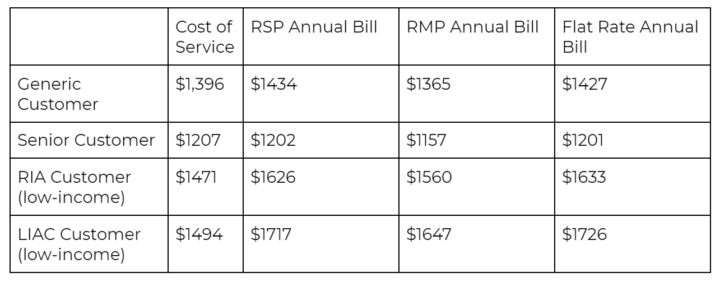How time-of-use electric rates protect low-income residents

Authored by

Charlotte Jameson
Connect With the Experts

Charlotte Jameson
At the start of the summer Consumers Energy rolled out new summer peak rates for all residential customers, one which the Michigan Environmental Council and others have long advocated for as they intervened in utility companies’ rate and energy decisions. The Environmental Council wrote about those rates and why they are good for the environment and our wallets.
These rates, called time-of-use rates, price energy usage a little higher when electricity consumption is at a peak and a little lower when it’s not. Doing so reduces peak energy use, keeps dirty, old fossil fuel plants offline, and saves customers money.
Since then, the Environmental Council has gotten a new analysis from Douglas Jester at 5 Lakes Energy that shows the rates are a critical step towards ensuring energy is more affordable for low-income customers. (Pages 45 to 60 are the most important.)
In his analysis, Jester looked at all the full 8760-hour load profiles of a random sample of 200 Consumers residential customers in 2019. These profiles provide a year’s worth of hour-by-hour analysis of energy use. The sample of residential customers included low-income residential customers enrolled in each of two Consumers programs that provide qualified low-income customers with bill assistance.
Jester compared the cost impacts of a number of different rate structures across several types of residential customers, including average/generic residential customers, senior residential customers and low-income residential customers.
The following graph shows the average hourly demand of residential customers relative to their hourly energy use and provides a clear look at the pattern of energy use for different types of residential customers.

RIA and LIAC customers are low-income customers that qualify for bill assistance. Generic customers are those that don’t qualify for bill assistance and are not seniors. The different points on the graph represent time-of-use or seasonal rates. The SUMMER-ON, SUMMER CRITICAL, 4CP, and Voltage Peak are rates that price peak higher than off-peak use.
While generic and senior customers have a very similar pattern of energy use (despite senior customers using a lot less energy overall), what is clear is that low-income customers use less energy than generic customers at peak, costly times (summer-on, summer-critical, 4CP, and Voltage peak). Because low-income customers use less energy during peak times they stand to save right off the bat via a well-designed summer peak rate that prices energy usage higher during peak times and lower at off-peak times.
The following table shows the average annual cost of service and the average annual bill under two different time-of-use rates (RSP and RMP) and a flat rate. They are compared with the cost of service, or the total costs incurred by a utility to serve a customer class and the basis on which rates are calculated. The closer a rate is to the cost of service the less the customer class is overpaying.

As seen above, under a flat rate scenario, low-income customers are overpaying anywhere from $162 to $232 every year. Under the time-of-use-style RMP (the rate with the biggest difference in cost between on-peak and off-peak), a low-income customer is still overpaying but to a much lesser extent – $89 to $153 annually. That is to say, time-of-use rates like Consumers Energy’s summer peak rate lessen the burden of overpayment for low-income customers.
What is of additional note is that this overcharge for all residential bills is primarily due to costs to upkeep the electric distribution system – the poles and wires that bring electricity to our homes and businesses. Right now, residential customers are shouldering a larger portion of distribution costs than industrial customers.
The Environmental Council is advocating for fixing this distribution of costs to bring costs down for all residential customers, including low-income.
The Environmental Council is also advocating that low-income customers be automatically enrolled in the rate that is the lowest for them. Right now that rate is the new summer peak because it better reflects their usage patterns. Going forward, however, we are pushing toward affordable rates for low-income customers that cap their bills at a percentage of income they can afford.
We’re doing so by continuing our years of experience intervening in utility companies’ energy plans and proposed rate hikes. Together, with the Citizens Utility Board of Michigan, the Natural Resources Defense Council and the Sierra Club, we’re adamantly pushing utilities to embrace a clean energy future with reliable, affordable electricity.
Discover
Power environmental change today.
Your gift to the Michigan Environmental Council is a powerful investment in the air we breathe, our water and the places we love.
Sign up for environmental news & stories.
"*" indicates required fields




